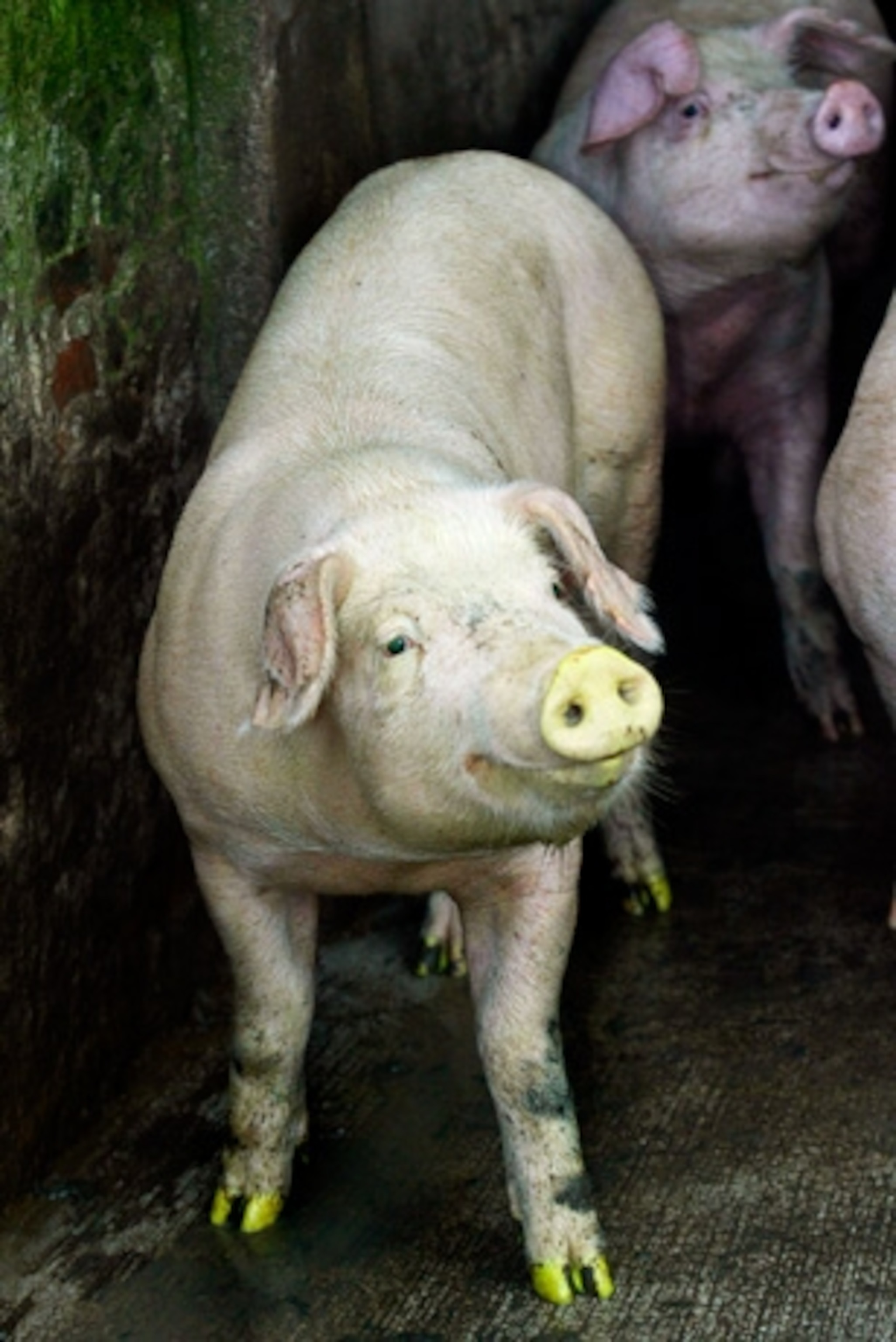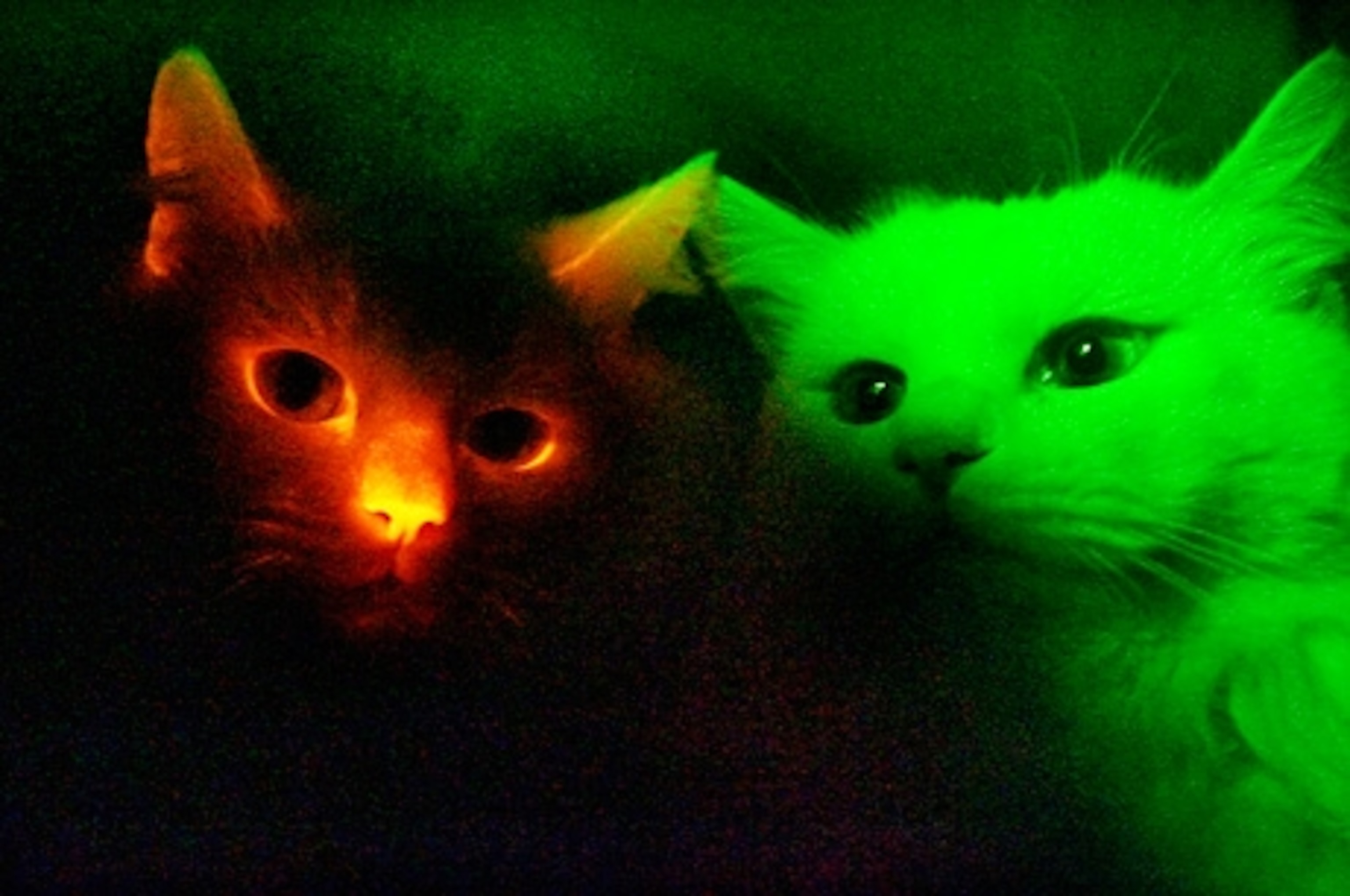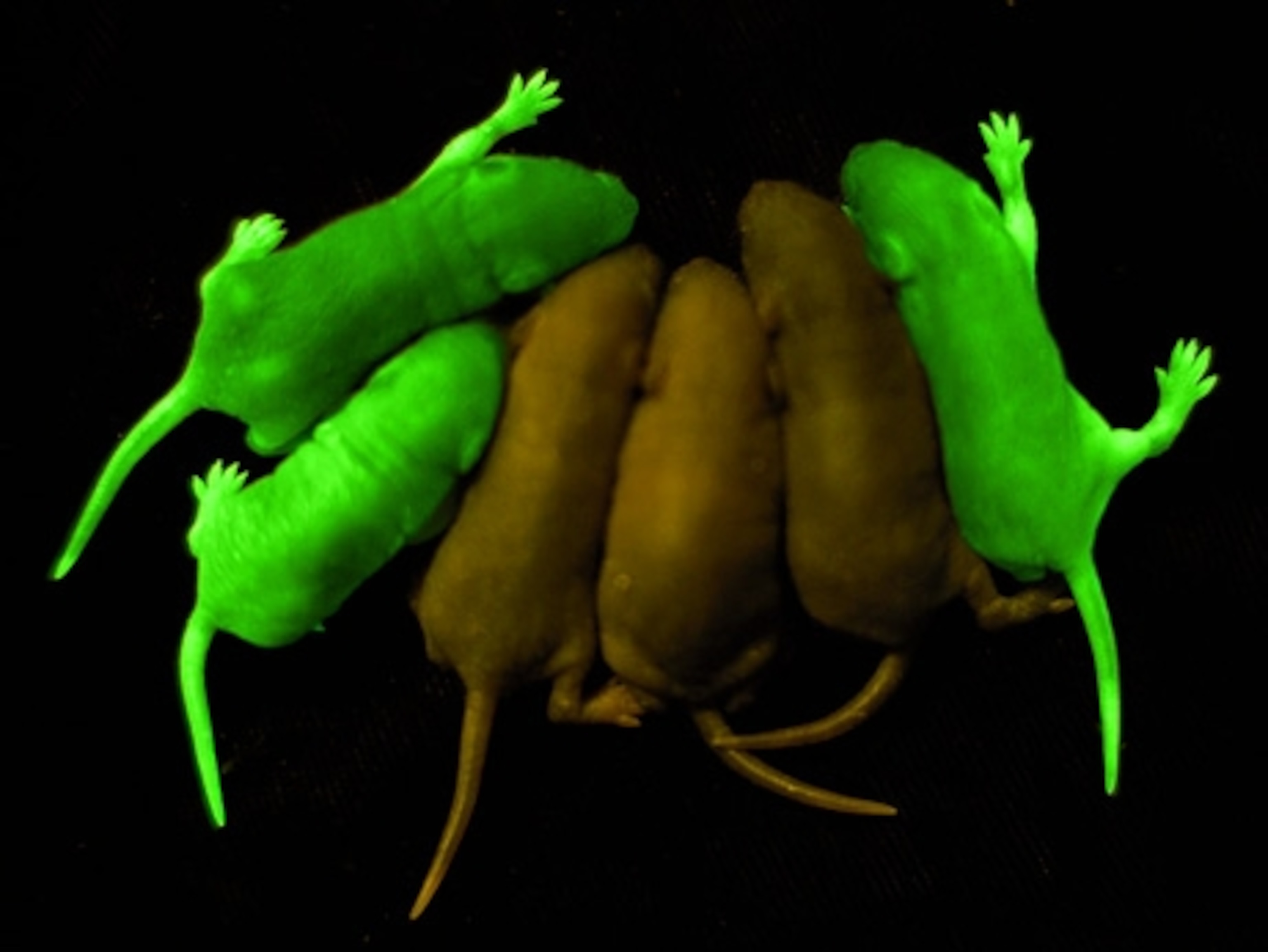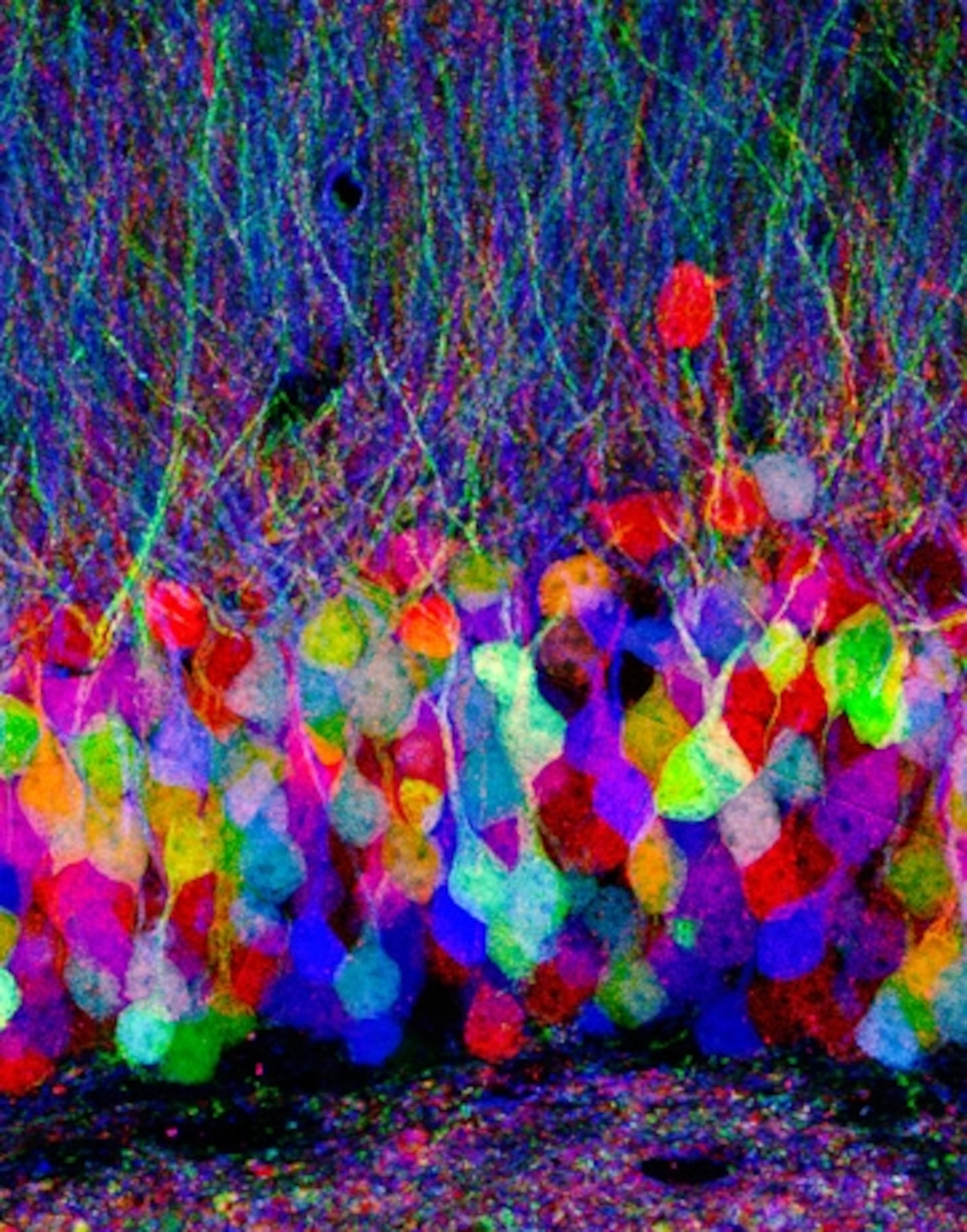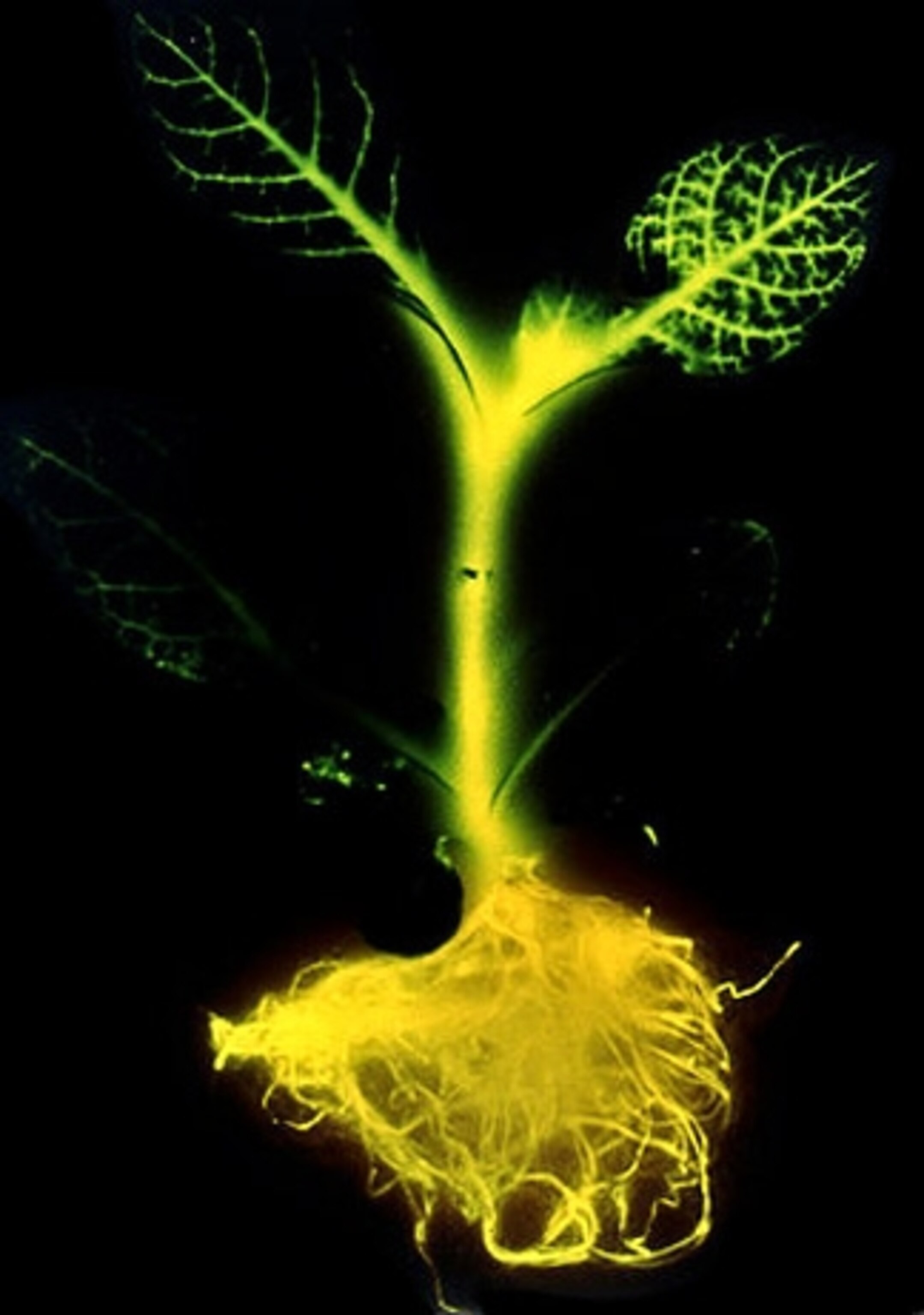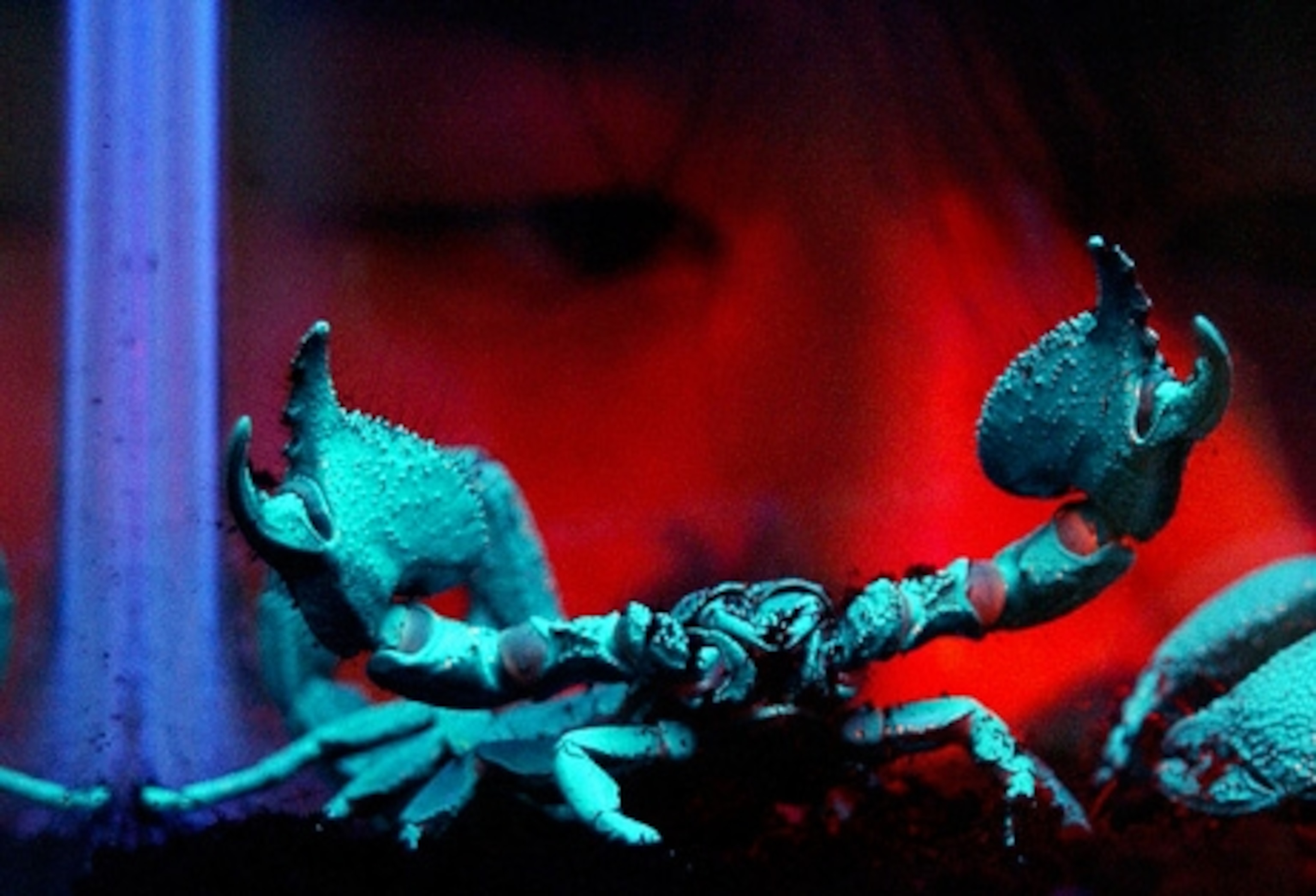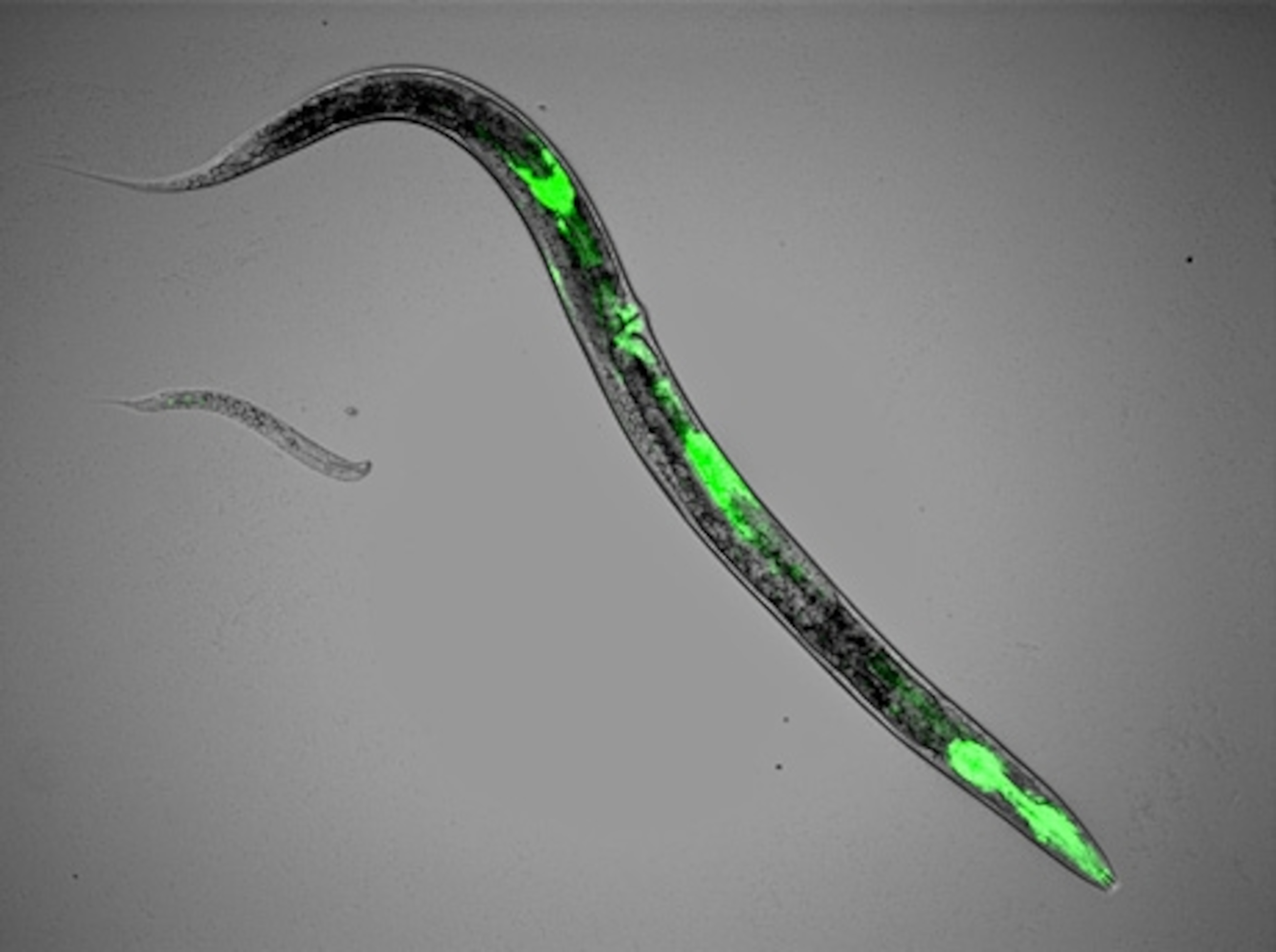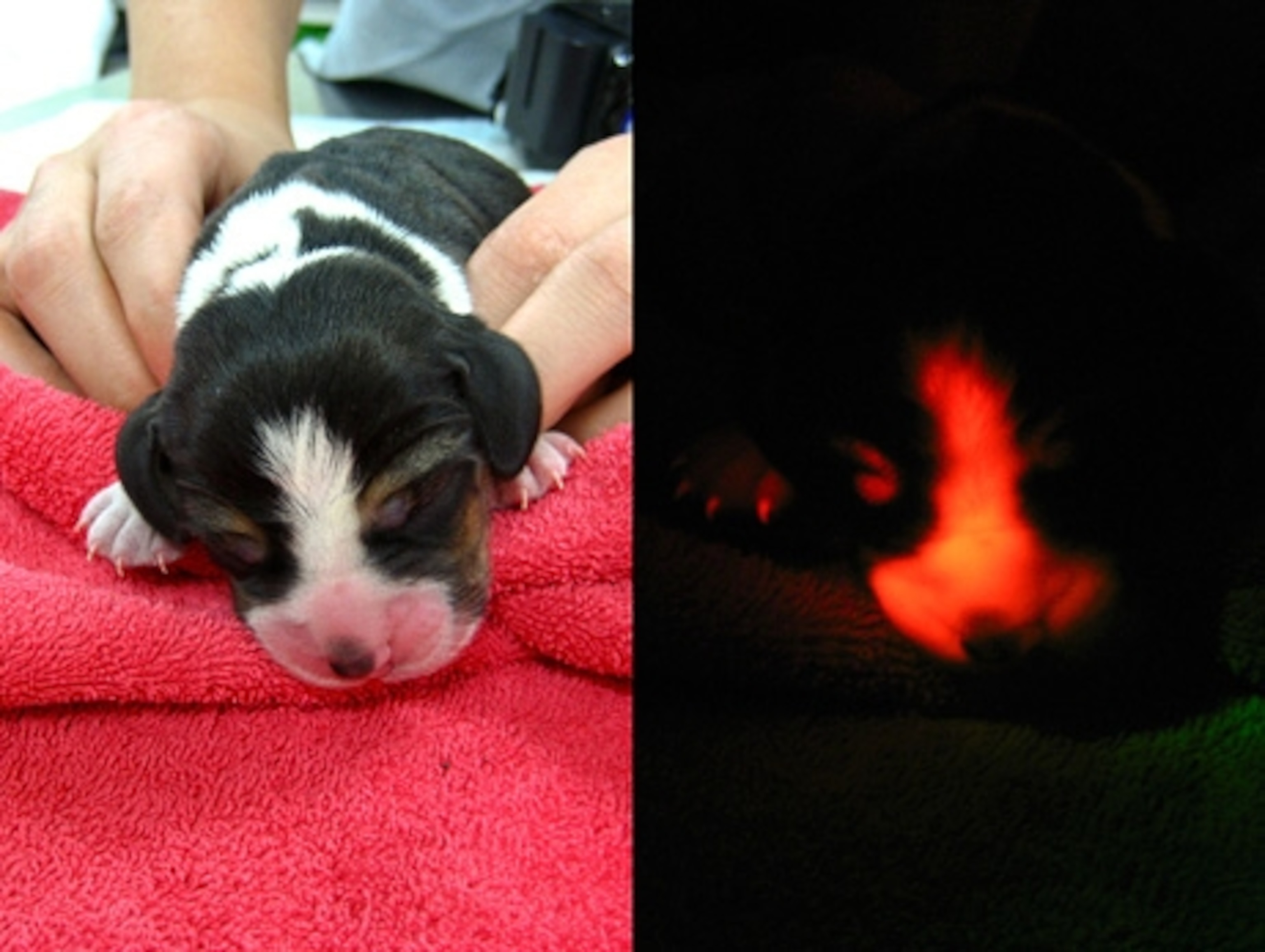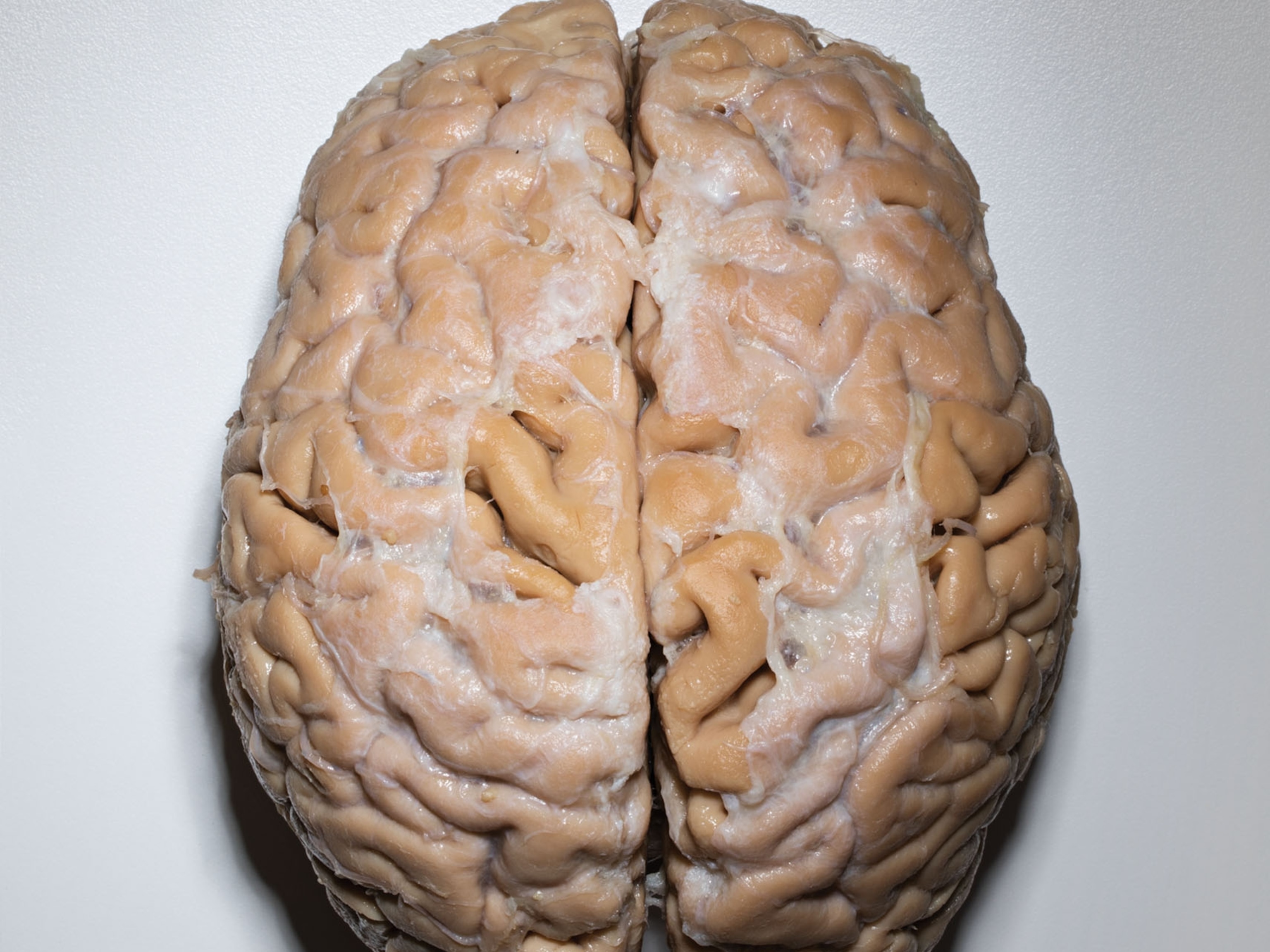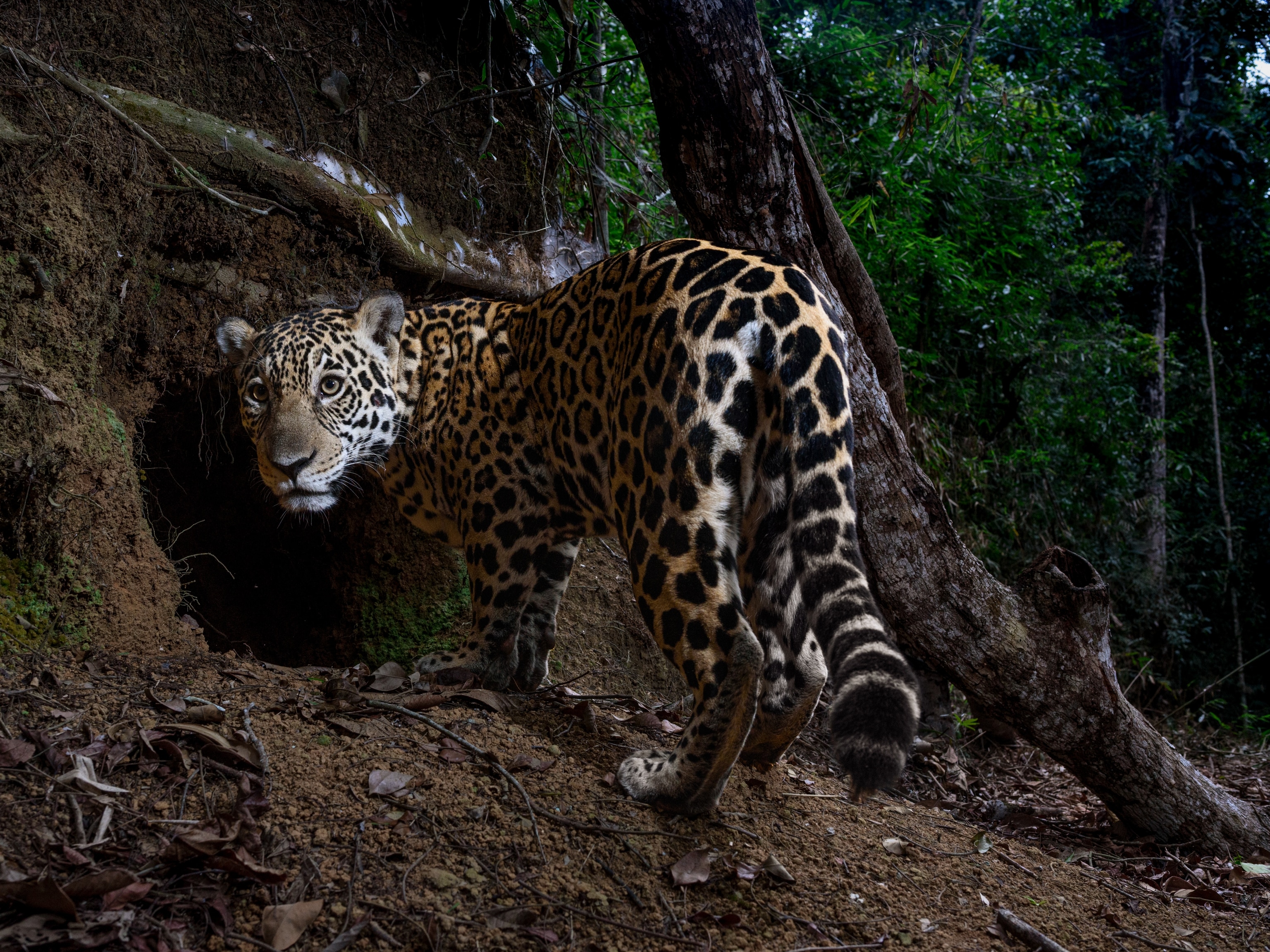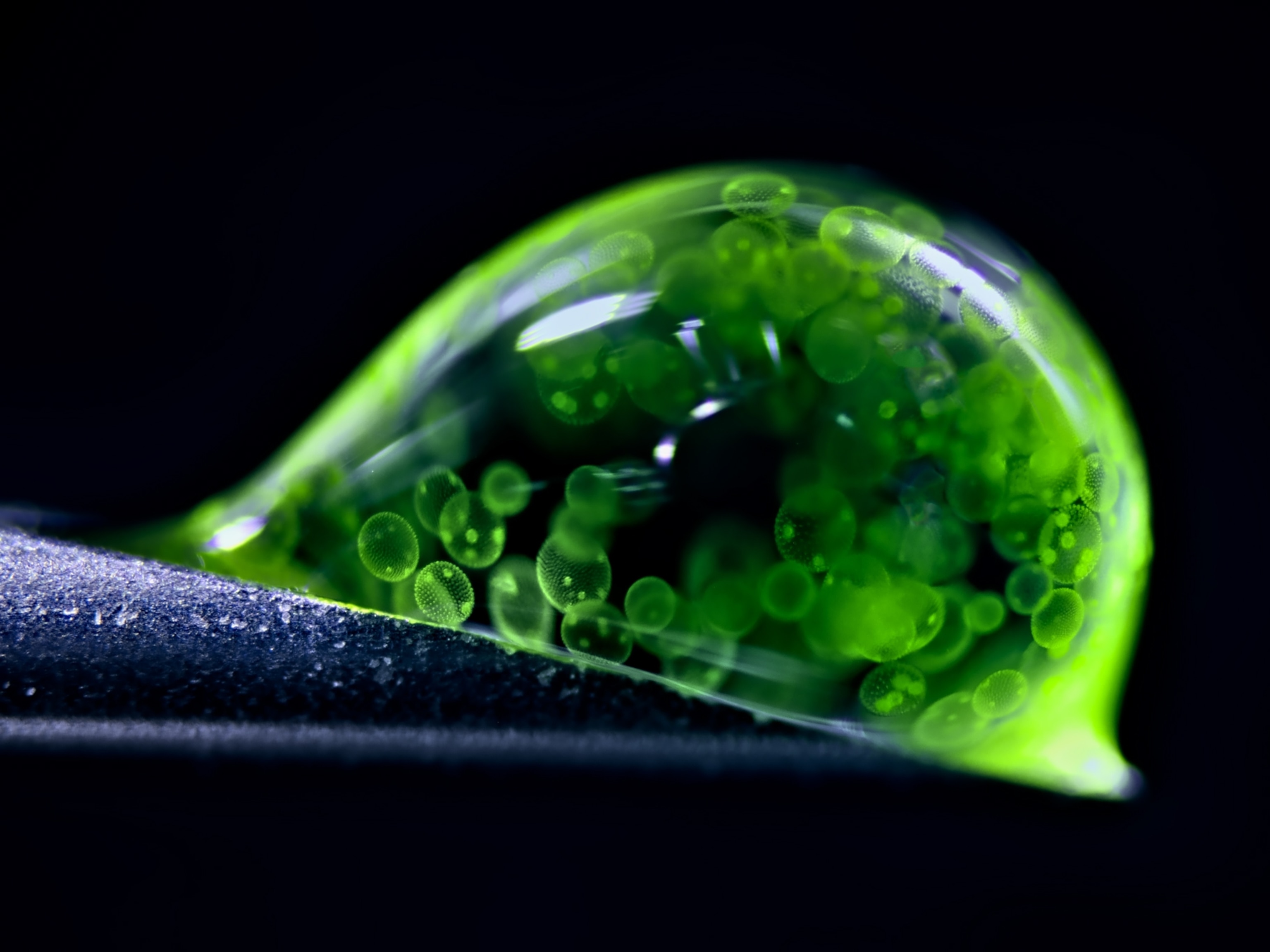How does it glow?
Green fluorescent protein, naturally occurring
What can we learn?
In 1961 researcher Osamu Shimomura of the Marine Biological Laboratory in Massachusetts noticed a molecule in this jellyfish that glowed bright green under ultraviolet light (as pictured).
After extracting the molecule from 10,000 specimens, Shimomura found the protein that creates the glow.
At some point, a light bulb went off. Some of Shimomura's colleagues realized that the protein could be attached to other proteins--enabling scientists to mark proteins of their choice with a green glow.
Since then, Shimomura's green fluorescent protein (GFP) has been used to decrypt previously invisible processes, like the spread of cancer or the development of nerve cells--earning Shimomura and colleagues a Nobel Prize in 2008.
Fluorescent proteins have also been used to engineer some truly strange beasts (and the odd plant), such as the glowing puppies, monkeys, mice, fish and other animals on the following pages. Photograph courtesy Osamu Shimomura and Marine Biological Laboratory, Woods Hole


